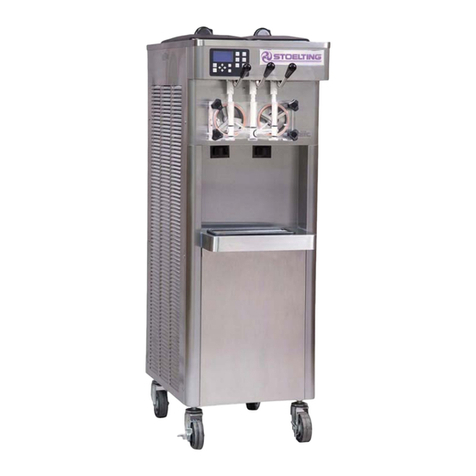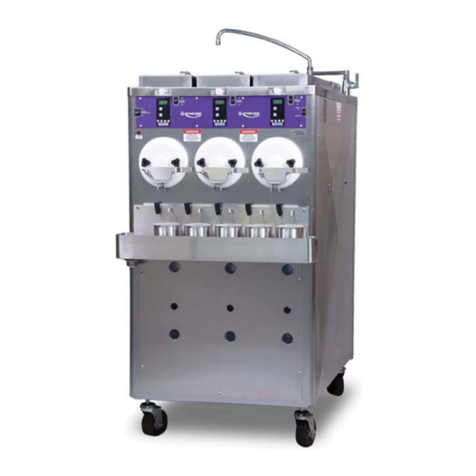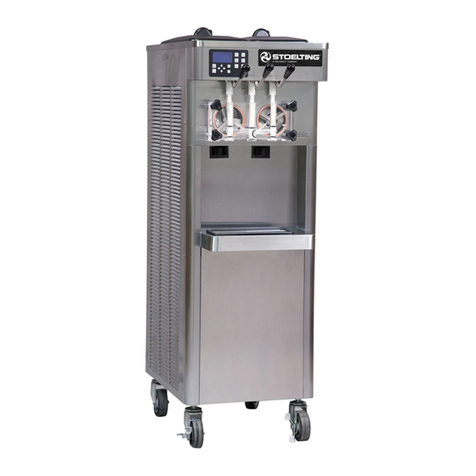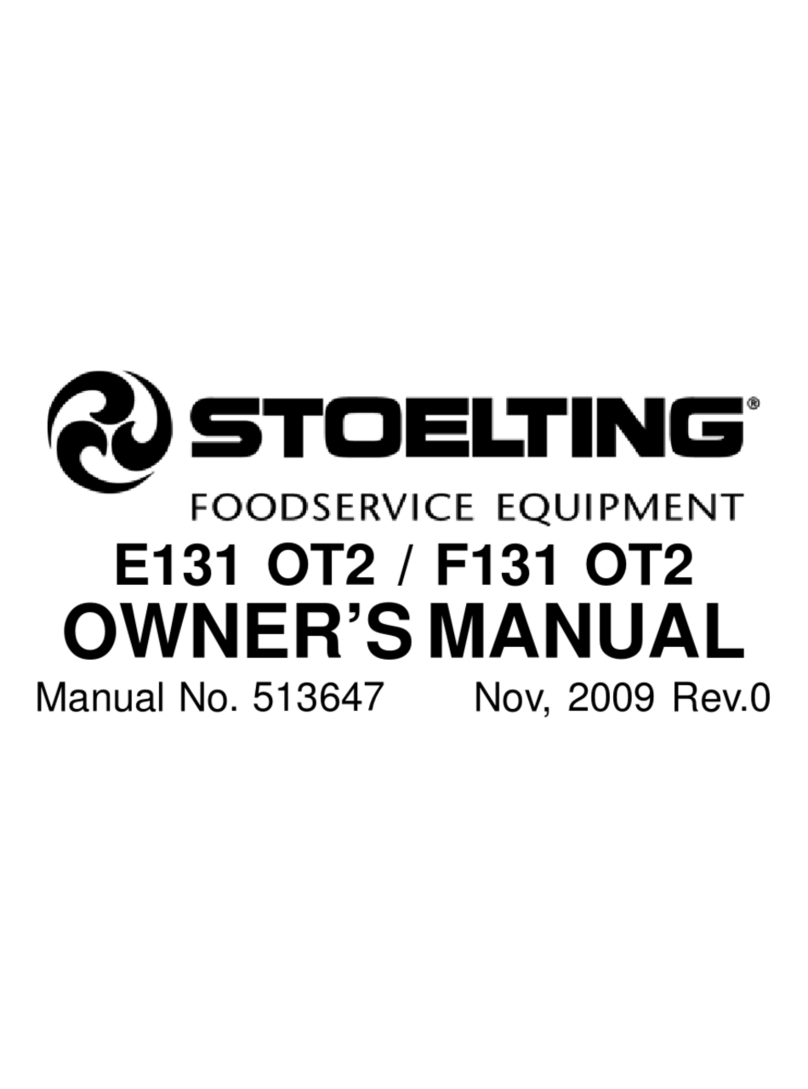
Owner’s Manual #513666 4 M202B Model Machines
3 Insulatethesuctionlinewithaminimumof3/8”wall
thickness or the wall thickness required by local
code. In humid areas, use thicker insulation. In
areasthatareexposedtoextremetemperatures,
insulate the liquid line to prevent excessive
sub cooling or heating of the liquid refrigerant.
Fasten all lines securely along ceilings, walls
and roofs. Avoid creating any type of kink in the
lines.TheStoelting/Rosswarrantydoesnotcover
malfunctions or capacity issues with equipment
caused by kinks in the line sets.
4 Usegoodpipingpracticeswheninstallinglinesets.
Sealtheendsofthelinesetsduringinstallationto
prevent exposure to the atmosphere and foreign
objects. Blow the lines out with dry nitrogen to
remove any debris that might be in the line sets.
When running line sets through a wall or roof,
mark the lines to eliminate confusion as to which
line set is running to which cylinder.
Example: Mark the liquid and suction lines with
the respective cylinder number. Facing the front
of the machine, cylinders are numbered left to
right.
5 When brazing the joints, purge dry nitrogen
through the lines to minimize oxidation of copper
inside of the lines. The Stoelting/Ross warranty
does not cover problems with the refrigeration
system that are caused by oxidized material in
the lines.
B. RUNNING ELECTRICAL CONNECTIONS
1 The machine requires a separate electrical
connectionforeachfreezingcylinder.Refertothe
nameplate on the machine for proper electrical
supply. Each freezing cylinder has its own
electricalsystemandcondensersoifonecylinder
fails, the other cylinder will still be operational.
NOTE
An air-cooled machine needs two circuits for each
freezing cylinder, one for the remote condensing
unit and one for the freezing cylinder.
Awater-cooled machine needs one circuit for each
freezing cylinder.
2 Theelectricalboxesarelocatedbehindthelower
front panel. Labels indicate which cylinder each
electrical box powers. No pigtails are supplied
with the machine or condensing unit.
3 If the condensing unit is on the roof or ground,
a quick disconnect box needs to be installed to
provide power.
4 Do not turn on the power to the machine or
the condensing unit until the refrigeration lines
have been connected and the system has been
chargedwithrefrigerant.Labelthecircuitbreakers
with information regarding which cylinder and
condensing unit the breaker is designated for to
preventconfusion if power ever needsto beshut
off.
5 When connecting power to the machine, run the
line under the machine and through the bottom
of the electrical box. Remove the electrical box
cover by loosening the four screws. The screws
do not have to be removed. Connect the power
to the terminal strip. The terminal strip is labeled
L1,L2,L3,andGND.Afterconnectionsaremade,
place the cover on the electrical box, but do not
tighten the cover (for single-phase machines the
cover can be tightened). The electrical box may
need to be accessed when checking for proper
rotation of the motor.
C. PLUMBING CONNECTIONS
1 On water-cooled machines, the water inlet is a
standard garden hose connection and the water
outlet is 5/8” OD copper tubing. The connections
are located at the back of the machine. Remove
the rear panel to access the connections. Run
the plumbing under the machine frame. Water-
cooled machines use approximately 3 gallons of
75°F water per minute when the compressor is
operating. The machine does not use any water
when not in use.
2 The machine is equipped with a dipping trough
that requires a water inlet line and a drain line.
The water inlet has 1/2” NPT close nipple fitting.
Install a shutoff valve in the water inlet line. The
drain connection is 1-1/2”. Run a drain line from
the trough to a drain on the floor. Leave enough
slackinthedrainlinesothatthelowerfrontpanel
can be easily removed for service.


































